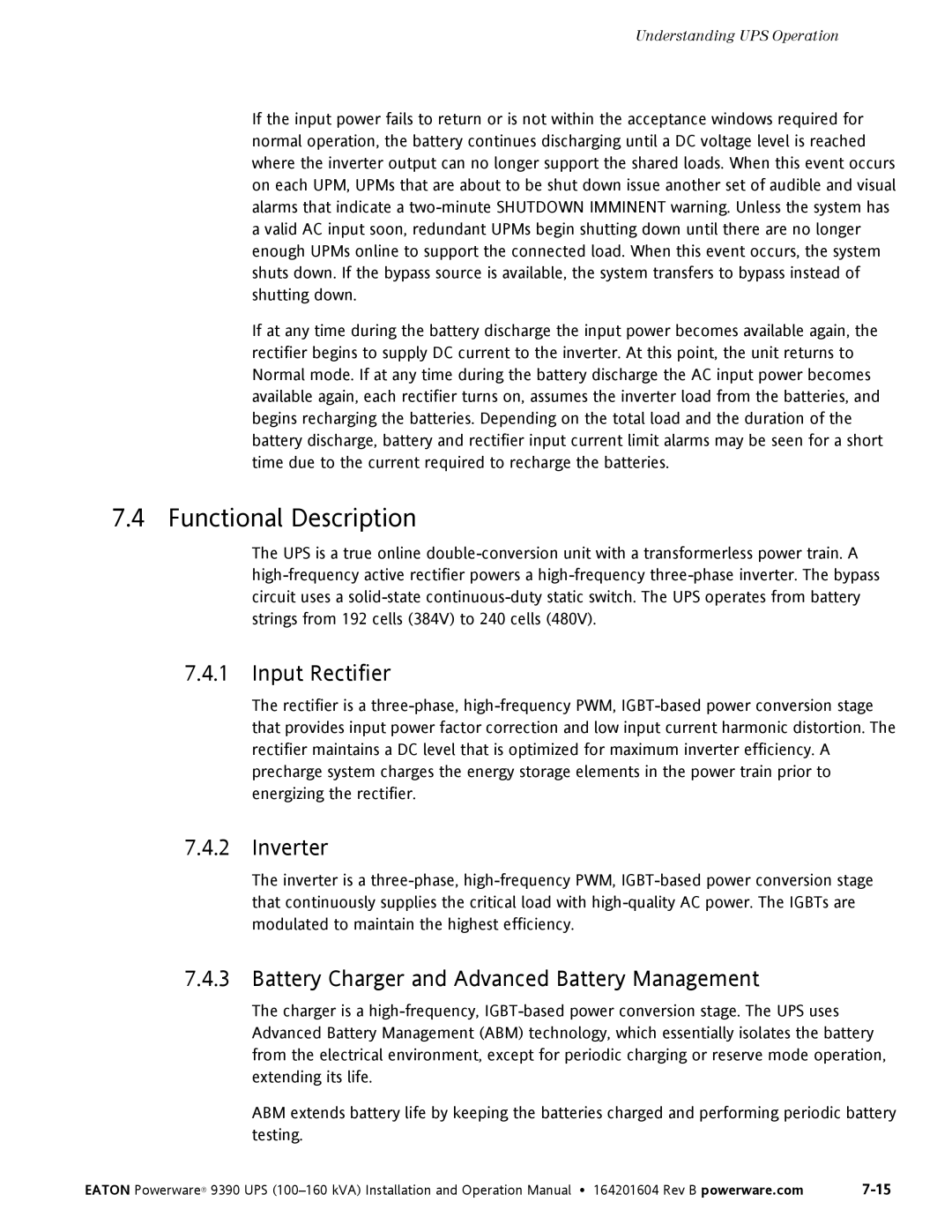Understanding UPS Operation
If the input power fails to return or is not within the acceptance windows required for normal operation, the battery continues discharging until a DC voltage level is reached where the inverter output can no longer support the shared loads. When this event occurs on each UPM, UPMs that are about to be shut down issue another set of audible and visual alarms that indicate a two-minute SHUTDOWN IMMINENT warning. Unless the system has a valid AC input soon, redundant UPMs begin shutting down until there are no longer enough UPMs online to support the connected load. When this event occurs, the system shuts down. If the bypass source is available, the system transfers to bypass instead of shutting down.
If at any time during the battery discharge the input power becomes available again, the rectifier begins to supply DC current to the inverter. At this point, the unit returns to Normal mode. If at any time during the battery discharge the AC input power becomes available again, each rectifier turns on, assumes the inverter load from the batteries, and begins recharging the batteries. Depending on the total load and the duration of the battery discharge, battery and rectifier input current limit alarms may be seen for a short time due to the current required to recharge the batteries.
7.4 Functional Description
The UPS is a true online double-conversion unit with a transformerless power train. A high-frequency active rectifier powers a high-frequency three-phase inverter. The bypass circuit uses a solid-state continuous-duty static switch. The UPS operates from battery strings from 192 cells (384V) to 240 cells (480V).
7.4.1 Input Rectifier
The rectifier is a three-phase, high-frequency PWM, IGBT-based power conversion stage that provides input power factor correction and low input current harmonic distortion. The rectifier maintains a DC level that is optimized for maximum inverter efficiency. A precharge system charges the energy storage elements in the power train prior to energizing the rectifier.
7.4.2 Inverter
The inverter is a three-phase, high-frequency PWM, IGBT-based power conversion stage that continuously supplies the critical load with high-quality AC power. The IGBTs are modulated to maintain the highest efficiency.
7.4.3 Battery Charger and Advanced Battery Management
The charger is a high-frequency, IGBT-based power conversion stage. The UPS uses Advanced Battery Management (ABM) technology, which essentially isolates the battery from the electrical environment, except for periodic charging or reserve mode operation, extending its life.
ABM extends battery life by keeping the batteries charged and performing periodic battery testing.
